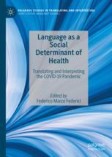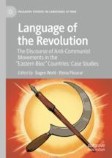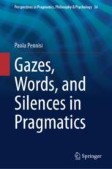Search
Search Results
-
Flexemes in theory and in practice
This paper provides an in-depth investigation of the possibility of systematically using flexemes – i.e., lexical units characterized in terms of...

-
Overabundance: A Canonical Typology
Overabundance is defined as the situation in which two (or more) inflectional forms are available to realize the same cell in an inflectional...
-
Splits, internal and external, as a window into the nature of features
Lexemes may be split internally , by phenomena such as suppletion, periphrasis, heteroclisis and deponency. Generalizing over these phenomena, which...

-
The Data and the Tools
To perform a quantitative, entropy-based analysis like the one that has been sketched out in the previous chapter, a large, representative lexicon of...
-
Language Discourses and Contacts in the Twenty-First-Century Far North—Introduction to the Volume
With this volume, we invite you on a trip to the Far North of Europe, to Finland and its neighbouring countries Estonia and Sweden, and across the...
-
The implicative structure of Asama verb paradigms
Formal and computational linguistics can enhance descriptive linguistics of endangered languages by providing them with precise models and...

-
VeLePa: Central Pame verbal inflection in a quantitative perspective
This paper reports on the compilation and quantitative analysis of VeLePa, an inflected lexicon containing paradigms of 216 Central Pame verbs and a...

-
ParaDis: a family and paradigm model
The unification of inflectional and derivational morphology is an issue that is often debated but on which there is no consensus. On the other hand,...

-
Translation as an Ethical Intervention? Building Trust in Healthcare Crisis Communication
An overabundance of (mis)information has accompanied the pandemic, posing a severe problem as it became an infodemic in public health communication....
-
Morphological autonomy and the long-term vitality of morphomes: stem-final consonant loss in Romance verbs and paradigmatic analogy
Morphologists of different backgrounds disagree with respect to the degree of autonomy of the morphological component of language from syntax and...

-
Competition in Inflection and Word-Formation
This is the first volume specifically dedicated to competition in inflection and word-formation, a topic that has increasingly attracted attention....

-
Surviving the Change, Adjusting the Language. Romanian Writers in the Cultural Media, December 1989–1990
Immediately after the December 1989 Revolution, Romanian writers took on the active role of public intellectuals. As soon as the ideological...
-
Semantic transparency and doublet formation: the case of Hebrew location nouns
This study examines the correlation between derivational paradigms and morphological variation and change. I will examine a case study of Hebrew...

-
Binomial adjective doublets in Japanese: A Relational Morphology account
Adjectives whose stems consist of two elements (or binomial adjectives) are becoming increasingly productive in colloquial Japanese. Unlike the stems...

-
What Does We Share with Other Animals?
From a phylogenetic point of view, vision has not always been what it is in man. Let’s take two simple examples.
-
Understanding the Significance of Situational Context and Common Ground in Communication
This chapter delves into the significance of situational context in linguistic comprehension and production, shedding light on its crucial role. It...
-
Attack the Title
As a case study, this chapter highlights how the English book title Wuhan Diary: Dispatches from a Quarantined City came about. In the absence of a...
-
Embodied Features of Interaction: Gestures
Gestures are another salient, embodied, interactional resource in the analysed film scenes. The current study focuses on only three categories of...
-
Grading and Feedback
Providing feedback to students is a critically important step in the learning process, and yet in many classrooms, feedback only occurs at the end of...
-
Alignment of forms in Spanish verbal inflection: the gang poner, tener, venir, salir, valer as a window into the nature of paradigmatic analogy and predictability
The future and conditional forms of venir ‘come’, tener ‘have’ and poner ‘put’ were characterized in Old Spanish by various alternatives (e.g. verné , vendré...

